Team
- Andrew Trepanier
- Faraan Hamad
- Levi Sunday-Lefkowitz
- Daniela Novoa Molina
Mentor
Mark Juba
Abstract
The purpose of this project is to investigate methods of removing Per-and-Polyfluoroalkyl Substances (PFAS) from landfill leachate. A novel separation apparatus was constructed using leachate foaming to remove PFAS.
Introduction
Per-and-Polyfluoroalkyl substances, also known as PFAS, are a family of more than 4,700 synthetic chemicals used in millions of consumer products as a non-stick substance. PFAS are very resistant to breaking down naturally, causing some to have lifetimes of over one thousand years. This is concerning because regardless of their usefulness, PFAS have recently been found to have various hazardous health effects such as increased risk of cancer, thyroid and liver damage, and pregnancy or birth defects [1]. Products containing PFAS are disposed in landfills where these chemicals then accumulate in the wastewater stream. Waste Management has recruited this team to investigate methods of PFAS removal that can be implemented on an industrial scale.
Methods
A novel steady state flow foaming column was constructed to remove PFAS, which concentrate in the foam phase and are then collected for further disposal. Air and leachate flow rates can be varied to optimize PFAS separation. They control variables were used to generate a two factorial design of experiments to examine the optimal operation conditions.
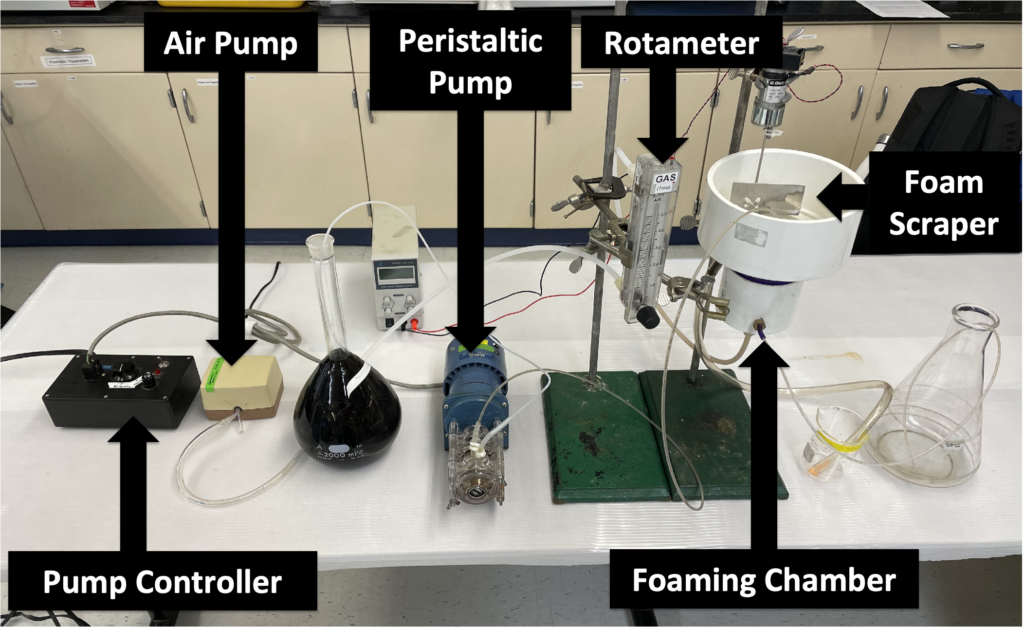
Results and Discussion
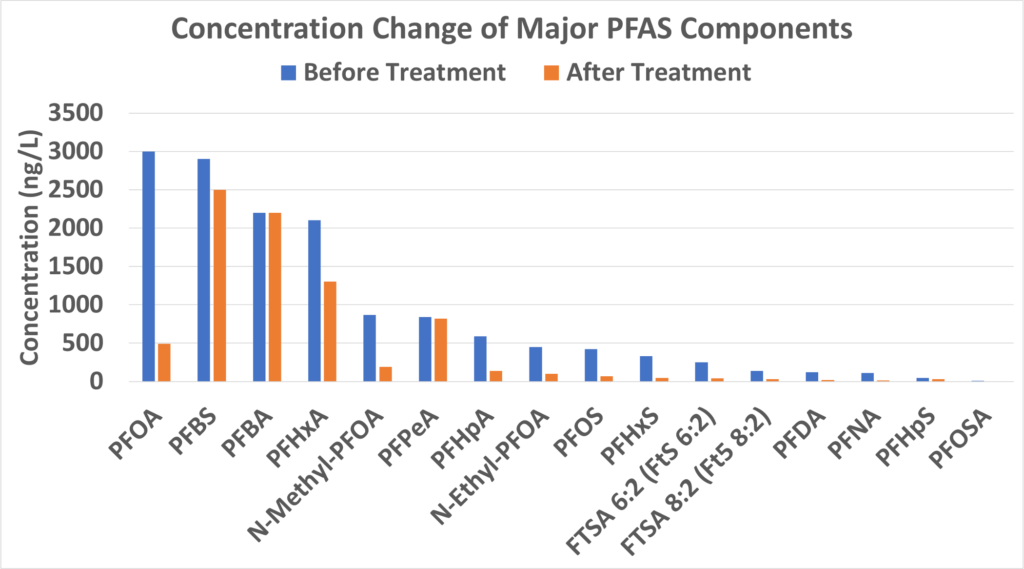
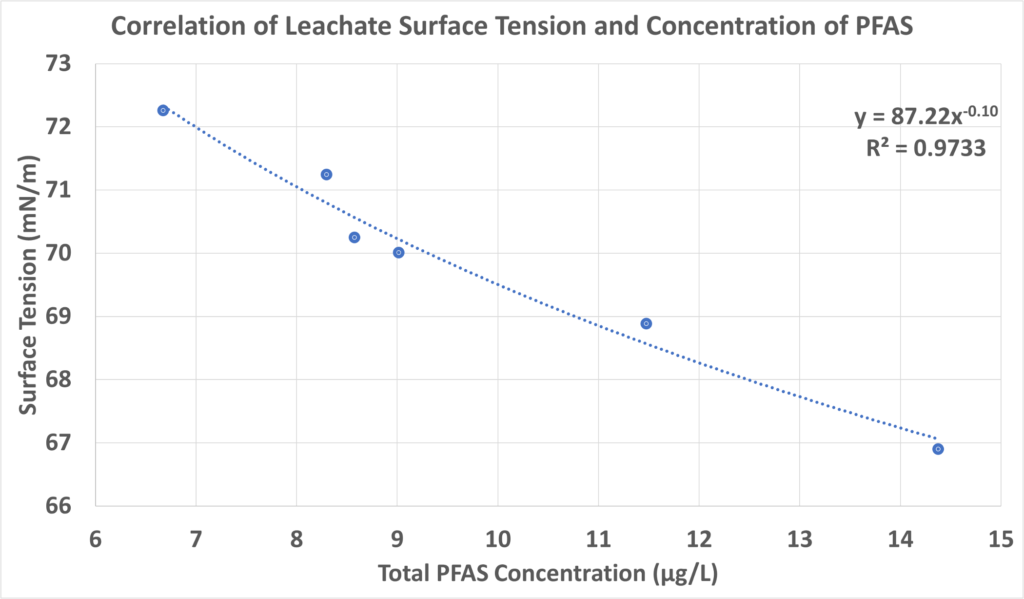
Measuring concentration of PFAS directly is difficult and expensive due to their dilute concentration in leachate. After experimentation with the leachate, it was found that its surface tension changes as PFAS are removed. This correlation has been modeled and can be used to estimate PFAS concentration and reduce testing cost for future experimentation.
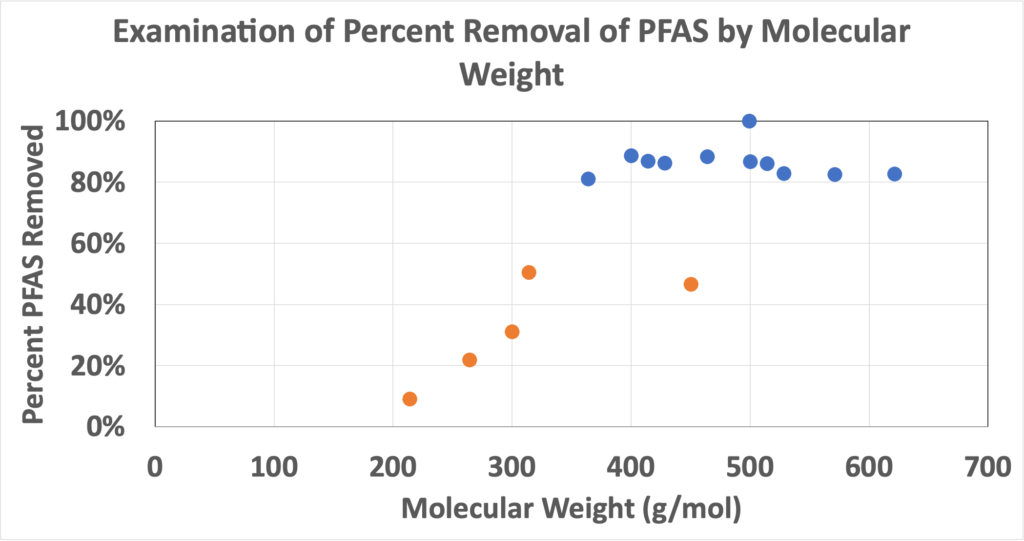
It was determined that PFAS with longer carbon chains are more effectively removed through foaming. PFAS having 6 or fewer linked carbons had relatively low percent removal values. Foaming can be utilized most efficiently in systems that are known to have high concentrations of long chains PFAS.
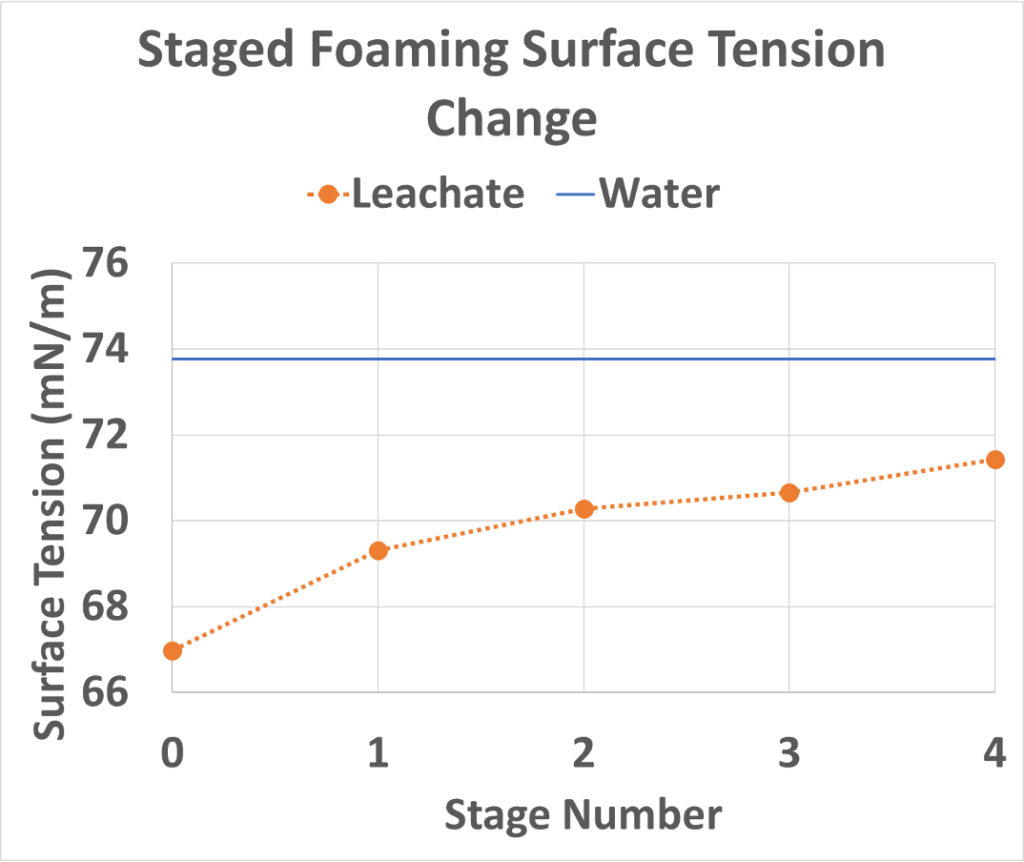
Samples of leachate were foamed repeatedly and observed to have a steadily increasing surface tension. This indicates that having multiple foaming chambers in series would be useful and maximizing PFAS removal in a scaled up process.
Conclusions
• The single chamber system state foaming system removes 54% of PFAS.
• Foaming is an effective method of PFAS removal, particularly for long chain PFAS.
• Four foaming chambers in series maximizes separation of long chain PFAS, yielding a minimum of 65% removal
• The correlation between concentration of PFAS and surface tension can decrease PFAS testing costs
Future Work
• Electrolysis of foam to breakdown long chain PFAS
• Size foaming system to pilot scale for one landfill cell
• Run repeated foaming trials to verify multistage foaming
• Test surface tension-concentration with PFAS standards
• Preconcentration for quantitative 19F NMR analysis
Acknowledgements
We would like to extend our gratitude to the team at Waste Management: David Cross and Nicole Simonetti, also Brian McGrath from Barton & Loguidice. We would also like to thank Prof. Mark Juba, Prof. Melodie Lawton, Prof. Douglas Kelley, Jeff Lefler, Clair Cunningham, and TA Jorge Medina for their support and guidance.
